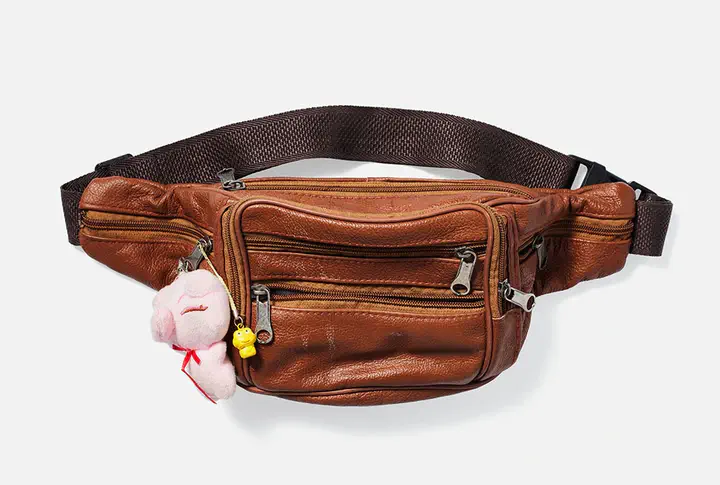Everything Everywhere's Entrancing Violence
Everybody is kung fu fighting (hoo, huh).
 Image Credit: A24
Image Credit: A24At the heart of Everything Everywhere All at Once (EEAAO) is the magic of the unexpected. That magic is perhaps most visible in the film’s absurd fight scenes, which turn buttplugs into power-ups, fanny-packs into rope darts, and IRS agents into WWE stars.
Viewing martial arts through the lens of racial formations, let’s take a look at how the movie’s fight scenes, particularly its elevation of Evelyn and Waymond Wong as kung fu protagonists, contributes to the social construction of Asian-American identity.
The martial arts of EEAAO are inspired by the legendary canon of Hong Kong kung fu films, drawing from the influence of Jackie Chan in particular. Chan, who was offered, but declined the role as EEAAO’s lead, is notable for his inventive use of everyday objects as weapons—the way he transforms a battlefield into his arsenal. Similarly, Evelyn and Waymond employ quotidian items, from fanny packs to keyboards, as key elements of their attack. Another homage to classical kung fu is Evelyn’s muscular pinky kung-fu, which echoes the one-inch punches of Bruce Lee. Asian motifs feature in more subtle ways as well. The cinematography favors long, sweeping shots, a hallmark of Hong Kong filmmakers, over the short, staccato cuts that often characterize American action scenes. This expansiveness and patience offers space for the dancelike choreography of Evelyn’s kung fu. Musically, the film’s soundtrack pairs dramatic Chinese opera, or 戏曲, with traditional percussion, including a gong and 排鼓.
But the film is not confined to the legacy of Jackie Chan and Bruce Lee—it soars above and beyond this history. Indeed, the choice to cast Michelle Yeoh rather than Jackie Chan seems incredibly generative, given that it places a middle-aged, immigrant Asian woman in a position of agency. Of course, Michelle Yeoh is no stranger to an action film, but this isn’t any action film. EEAAO takes a supposedly meek, mild-mannered, indebted immigrant woman and turns her into a dazzling display of martial arts. Importantly, Yeoh doesn’t succumb to the trap of becoming a submissive lotus blossom, a seductive femme fatale, or a helpless damsel in distress, roles that Asian women are too often pigeonholed into. Instead, her displays of strength allow her to actualize her own dreams independently, turning martial arts into a tool of self-actualization rather than performance for the male gaze. In the context of continued violence against Asian women, this show of force defiantly carves out control for those who are almost always denied it.
Importantly, the film also avoids the danger of essentializing its main characters as merely martial arts practitioners. Evelyn, Waymond, and Joy are all given complex motivations and character arcs, and while they do practice kung fu, they do so in service of broader goals. While other kung fu movies turn martial arts into something exotic, foreign, or inscrutable, audiences can relate to the violence of EEAAO because its protagonists remain distinct from their fighting ability.
While these hypnotic, absurd displays of martial arts are beautiful, their absence is even more powerful. In contrast to other Asian action films, from Kung Fu Panda to Shang Chi, the film does not end with a dramatic boss fight between Evelyn and the all-knowing Jobu Tupaki, in which the victor is the one who can shoot bigger lasers or pack a stronger punch. Instead, it resolves with an apology in a parking lot. This may seem anticlimactic, but it exposes a major theme of the film. The trauma that stems from a violent past cannot be healed or cured or processed through additional violence. Instead, kindness and empathy are the right medicine for this disease.
Take, for example, the different Waymonds that we encounter throughout the film, which shed light on the way that Asian masculinity often succumbs to Orientalist pressure. Alpha Waymond is the definition of machismo. He is quick to violence, a talented fighter, and willing to sacrifice others in pursuit of his mission. In other words, Alpha Waymond attempts to combat the stereotype of Asian men as weak and feminine by leaning into militaristic white masculinity. In a similar vein, the gun-toting Alpha Gong Gong favors fisticuffs over dialogue, even encouraging Evelyn to kill her own daughter. While Evelyn is impressed with Alpha Waymond at first, he quickly abandons her once he thinks that she is no longer valuable, and almost predictably, his shoot-first, ask questions later mindset leads to his eventual death at the hands of Jobu Tupaki. Fighting fire with fire, it seems, is no way to overcome the legacy of Orientalism.
In contrast, both regular Waymond and business Waymond recognize the limits of violence. They are neither martial arts masters nor pushovers, but instead wield optimism and empathy as their weapons. Regular Waymond, for example, is quietly proactive, defusing conflict with patient negotiation. As Business Waymond puts it, “when I choose to see the good side of things, I’m not being naive. It is strategic and necessary.” Regular Waymond follows this line with a plea for kindness, especially in times of uncertainty. This joint call for empathy is deeply inspiring for Evelyn.
When Evelyn takes up arms again, she does so with a new mission. Rather than seeking to crush her enemies, she heals them, literally. In doing so, she displays a newfound understanding of what strength actually means. It is not found by adopting the machismo of a superhero, but instead the compassion of a mother.
This is a kung fu movie, yes, but is also so much more. It is at once an embrace and a rejection of the genre, a heartfelt nostalgia for what might have been in China and hope for what can still be in America. For a film that journeys across the multiverse, it is fitting that even its martial arts contain multitudes.